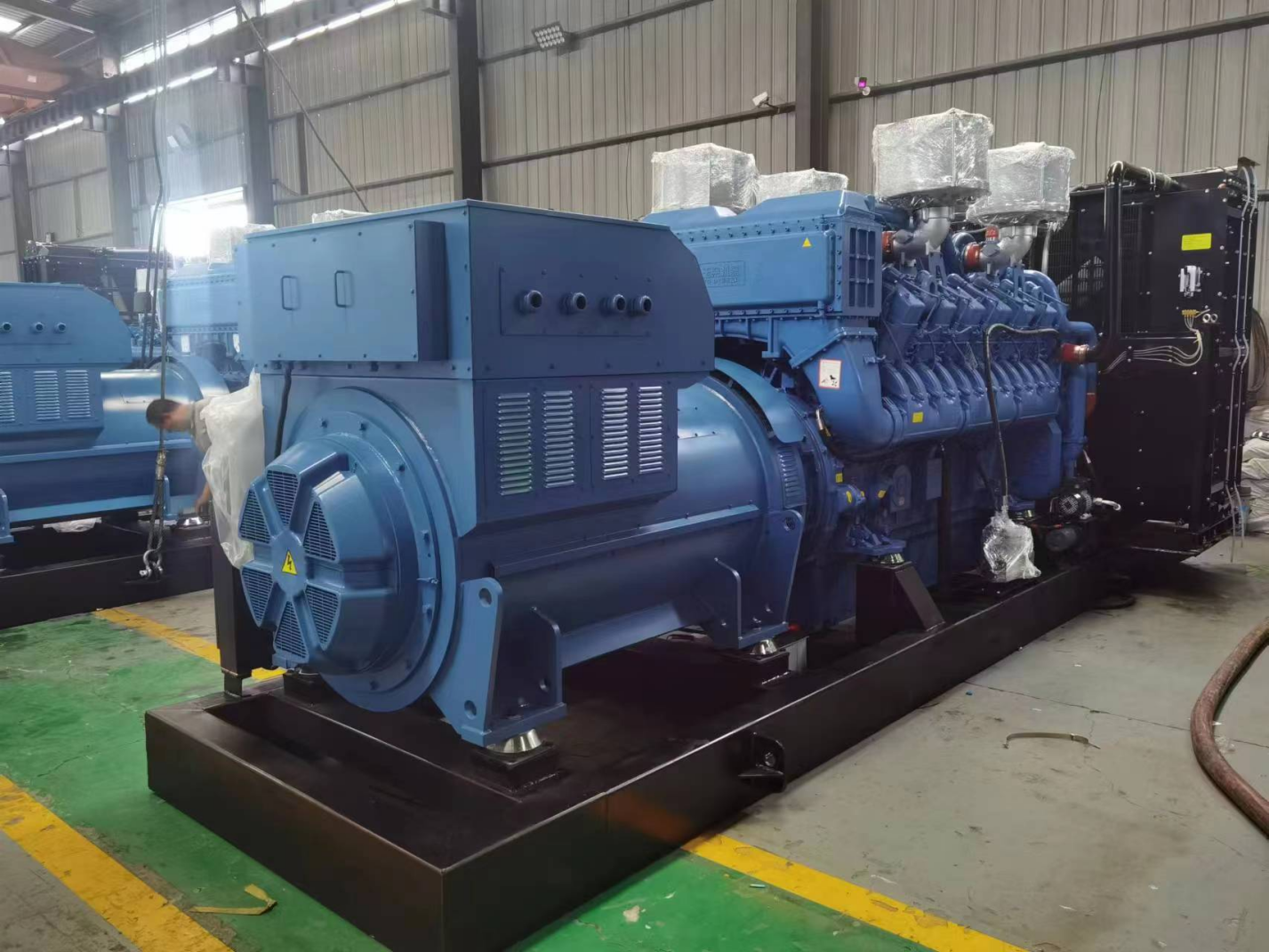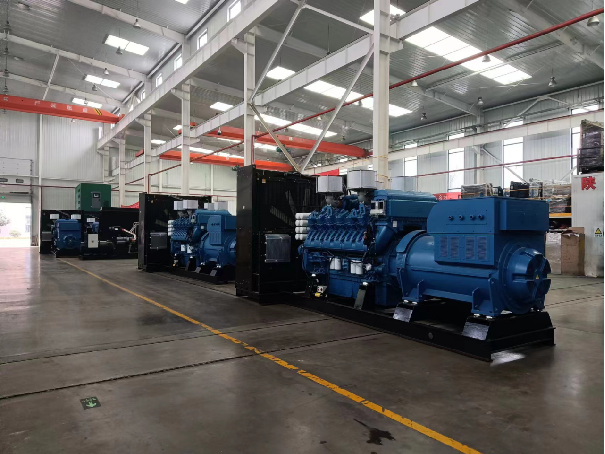Power interruptions can inflict massive financial losses on data centers. Even a few minutes of downtime can disrupt cloud services, interrupt storage devices, or shut down critical networking equipment, resulting in data loss or hardware damage that may reach millions of dollars. Beyond direct costs, outages also damage client trust.
This significant risk primarily stems from an over-reliance on a single power grid. The grid may become unstable or experience interruptions due to natural disasters, overloads, or equipment failures. That’s where data center generators play a decisive role and provide the redundancy needed to keep operations running.

Relying on a single power grid for electricity supply means that the operation of a data center is entirely subject to the stability and reliability of external power sources. This dependency entails multifaceted risks, which can be categorized as follows:
Natural factors are among the most unpredictable threats. Extreme weather events, such as blizzards or heavy rainstorms, can directly destroy infrastructure like transmission lines and substations. Prolonged high temperatures lead to a surge in electricity demand and may cause equipment failures due to overheating.
Plus, geological hazards such as earthquakes or landslides can not only directly damage power facilities but also hinder repairmen from reaching the site promptly, prolonging power outages.
Recovery from such events may take hours or even days, leaving facilities without a stable power supply during critical moments.
In many regions, electrical networks are decades old and operate close to their limits. Due to this, equipment failures, short circuits, and overloaded transformer risks are high.
During peak electricity demand periods, aging lines and equipment may trip or burn out due to overload, triggering a chain reaction that leads to localized or even widespread blackouts.
Human error also contributes to grid instability. Construction crews may accidentally cut underground cables, or operators may make mistakes during maintenance or switching operations. Such risks, though rare, are not entirely impossible to occur. Even minor labor oversights can trigger major issues that take hours or days to fully resolve.
In some regions, due to insufficient power generation capacity or adjustments in energy policies, grid operators proactively implement shedding or rolling blackouts during peak usage periods to ensure the overall stability of the power grid.
A data center without its own backup power would be forced into shutdowns, which could compromise service agreements and business continuity.
The core function of data center redundancy and backup systems is to eliminate single points of failure. When the main power grid fails, the uninterruptible power supply (UPS) system immediately (within milliseconds) provides electricity to prevent any voltage fluctuations or momentary outages from damaging sensitive IT equipment.
Subsequently, backup date center generators (commonly diesel-powered) automatically start up. They stabilize operation and take over the load before the UPS battery is depleted, providing long-term power support to the data center until the main grid is restored.
However, data center redundancy is not a one-size-fits-all approach. Rather, it involves implementing various redundancy levels based on business needs, including N, N+1, 2N, and 2N+1. "N" represents the total capacity required for the basic operation of the data center. The redundancy level defines the additional capacity beyond "N":
▲ N: The minimum power capacity for a system to power or cool a data center at full load, without any redundancy. Consequently, this architecture cannot handle any equipment failures.
▲ N+1: One additional backup unit is installed beyond the required “N” capacity. If a single component fails, the spare unit takes over, giving the system basic fault tolerance at a reasonable cost.
▲ 2N: It involves constructing two completely independent systems, each with a capacity of N. Either system is capable of independently supporting the entire data center load. This configuration provides full fault tolerance and extremely high flexibility. If the entire main system fails, the duplicate takes over, and the data center continues operating normally.
▲ 2N+1: This model provides a full duplicate system plus an additional spare unit. It delivers the highest level of reliability and is often used in facilities where downtime cannot be tolerated, such as financial institutions and government data centers.
How to validate a data center's risk-bearing capacity? The Data Center Tiers, established and certified by the Uptime Institute, provide an authoritative standard system [1]:
· Tier 1 Data Center: 99.671% uptime or less than 28.8 hours of annual downtime
· Tier 2 Data Center: 99.741% uptime or less than 22 hours of annual downtime
· Tier 3 Data Center: 99.982% uptime or less than 1.6 hours of annual downtime
· Tier 4 Data Center: 99.995% uptime or less than 26.3 minutes of annual downtime

Data centers require generators that deliver immediate response, support heavy electrical loads, and operate safely under continuous demand. Here are the characteristics of high-quality and reliable data center generators:
When the data center power supply fails, even a few seconds of delay can cause server failures or data loss. Reliable data center generators are built to reach full operation quickly, which ensures business continuity during sudden outages.
Meeting the electrical demand of a data center requires a generator built for continuous and heavy-duty performance. Racks filled with high-density servers and storage arrays draw large amounts of electricity around the clock, creating a load that is both intense and constant. To ensure stability, the data center power generator must deliver power without fluctuations, overheating, or drops in efficiency.
Data center power systems often depend on more than one generator, which makes synchronization essential. Reliable data center generators offer seamless paralleling that enables multiple units to work together as a single system, sharing loads evenly, scaling capacity when demand grows, and covering gaps if one generator shuts down.
Dependable fuel supplies are important to ensure reliable power systems for data centers. Data centers cannot risk running out of power just because fuel is scarce or poorly stored. Secure access to diesel or natural gas, combined with safe storage and fire-protection measures, ensures that data center generators can operate continuously during long outages.
If you are selecting a backup power generation system for your data center, EvoTec alternators are a reliable choice due to their high efficiency, exceptional reliability, and strong adaptability.
They can ensure stable operation even under heavy nonlinear loads, while achieving 0.5%-1% higher generation efficiency compared with many competitors. This efficiency translates into meaningful cost savings for facilities running around the clock.
Lower temperature rise extends equipment life, and strong performance in both parallel and grid-connected setups makes the integration of these data center UPS power systems seamless.
Data centers face natural, aging, human error, and power restriction risks when relying only on the public grid. This makes redundancy supported by reliable backup systems an important part of any data center.
EvoTec high-quality data center generators make this possible by providing fast startup, strong load capacity, seamless integration, and dependable fuel supply. Contact EvoTec now to custom a solution for your data center!
[1] Breaking Down Data Center Tier Level Classifications. Available at: https://www.coresite.com/blog/breaking-down-data-center-tiers-classifications (Accessed: 9 September 2025)
